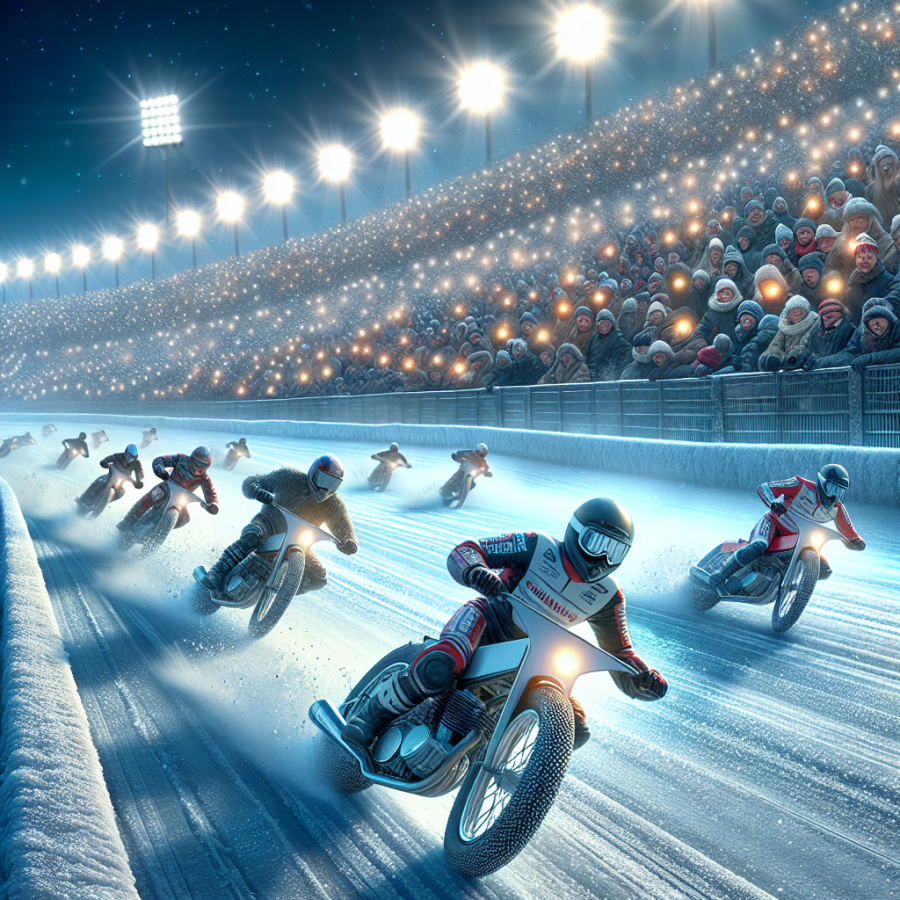The Slippery Duel: Strategies and Skills behind Glacial Speedway Competitions
Ice Speedway racing, a daring motorsport where riders battle it out on frozen circuits, demands a unique combination of strategies and skills to navigate the slippery surface. Unlike any other racing event, a Glacial Speedway competition requires racers to exhibit exceptional control and precision as they slide across the ice, reaching speeds that would seem reckless in less adventurous sports. Here, we delve into the tactics and abilities that riders use to gain an edge in these frosty contests.
One of the crucial elements of a racer's strategy is understanding the track. Before any competition, riders spend time walking the track to closely examine the quality of the ice and identify the best racing lines. Since the ice conditions can change with temperature shifts, a strategy that worked during an earlier practice session may need to be altered on race day.
Tire selection and preparation are key in these contests. The tires used in Glacial Speedway racing are fitted with spikes or studs to enhance grip on ice. Riders and their teams carefully choose and maintain their tires to ensure maximum traction on the slippery surface. This maintenance includes adjusting the length and pattern of studs based on ice conditions, as well as ensuring that the tires remain at an optimal temperature to grip the ice effectively.
Maneuvering at high speed on ice also requires exceptional skill and balance. Riders use a technique called power sliding, where they throttle their bikes into slides through the corners, controlling the slide and maintaining speed while skirting the edge of traction. It's a delicate dance between throttle control, body position, and steering inputs that separates the good from the great on the ice.
Mental fortitude is another attribute that cannot be underestimated in Glacial Speedway racing. The fierce competition and potentially hazardous conditions demand riders to remain calm and focused. A rider must be strategic in their overtakes, knowing when to push for a pass and when to hold back, waiting for the opponent to make a mistake.
Additionally, managing the bike's power is another skill that riders refine over time. Too much throttle and the wheels can spin out, too little and the bike loses precious momentum. Finding the sweet spot is critical for maintaining speed and smoothness on the course.
Physical stamina is put to the test as well, as riders must battle the extreme cold and the g-forces generated during tight cornering. Racers train rigorously off-track to build endurance and strength, particularly in the core and lower body, which are essential for navigating a bike on ice.
Read also:
Trailblazing Payday: First Athlete's Salary in Bitcoin
Mastering the Frozen Circuit: The Intensity of Ice Speedway Racing
Ice Speedway Racing is a sport where the word 'intense' barely scratches the surface of the frozen battlegrounds where these gladiator-like riders compete. Known for its high-octane thrills and chills, the sport takes athletes and their bikes to the extreme limits of what is possible on ice.
The bikes used in Ice Speedway Racing are specialized machines tailored to tackle the harsh glacial conditions. Fitted with razor-sharp studded tires that grip into the ice, these bikes can reach speeds that defy the slick, treacherous terrain beneath them. The riders must have a unique blend of skill, daring, and precision. They lean into the curves at angles that seem to defy gravity, trust in their ability to handle the bikes at the edge of control is paramount.
The preparation for each race is just as intense as the competition itself. Riders and their teams pore over every detail of the bikes, ensuring that the spikes on their tires are perfectly suited for the day's conditions. The ice's texture can vary greatly, from slick and glassy to rough and rutted, affecting the spikes' grip. Altering just a few millimeters of the spike can be the difference between victory and defeat.
The conditions in which Ice Speedway Racing is held contribute significantly to its intensity. Temperatures can plummet to bone-chilling extremes, where mechanical parts are prone to freezing and human resolve is tested. Racers must maintain extraordinary levels of physical conditioning and mental toughness. They suit up with specially designed gear that not only protects them from the biting cold but also from potential falls on the unforgiving ice.
The races themselves are a spectacle of adrenaline and strategy. Riders jostle for position, taking advantage of the slightest mistakes by their competitors. The roar of the engines, the hiss of spikes slicing through the ice, and the cheer of the crowds create a palpable excitement in the air. Each contest is a masterclass in controlled chaos, where split-second decisions can lead to either a spectacular win or a dramatic wipeout.
In the midst of this frosty melee, the camaraderie among riders is a warm contrast. There is a mutual respect born out of shared experience, understanding the unique demands and dangers that this sport entails. While fierce competitors on the ice, many are close friends once the helmets come off. The tight-knit community of Ice Speedway Racing is one that is as much about relationships and mutual support as it is about the competition itself.




